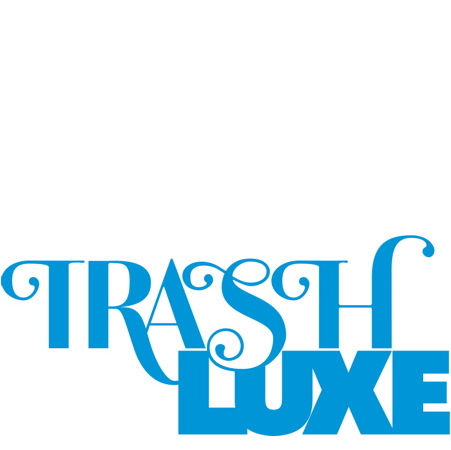
Trash Luxe at Liberty
Trash Luxe at Liberty is an exhibition celebrating designers use take cheap or worthless materials to make exquisite furniture, lighting and jewellery.
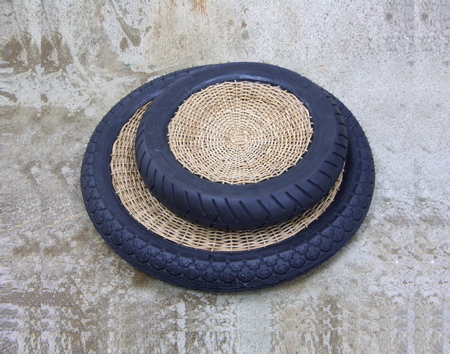
Curated by dezeen editor Marcus Fairs, the exhibition takes place at Liberty in London from 20-30 September 2007, during the London Design Festival.
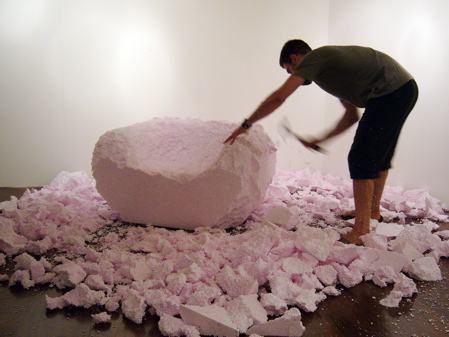
The show will feature the work of over a dozen (mostly) young designers from the UK and abroad, bringing together figures including Stuart Haygarth, Max Lamb (above), Ineke Hans and the Campana Brothers.

For more details, see the Trash Luxe website (below).
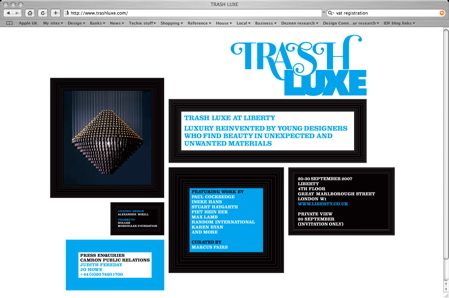
Graphic design is by Alexander Boxill. Thanks also to Hulger.
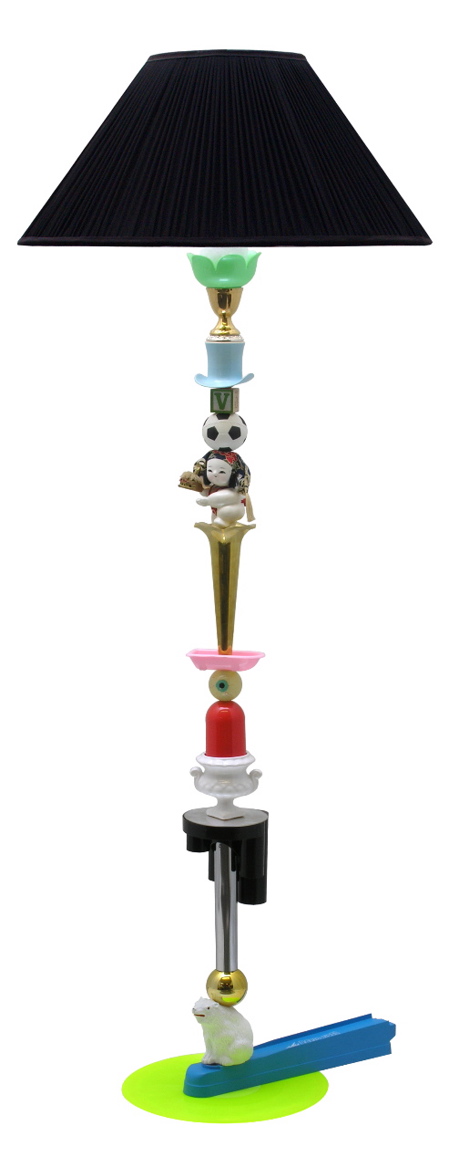
Below are biographies of some of the designers and details of what they will be showing; several other designers will also be represented, including Piet Hein Eek, Sarah van Gameren, Committee (above is their Victory Kebab Lamp) and Dominic Wilcox:
--
Trash Luxe at Liberty - Designers’ Biographies
Majid Asif was discovered at this year’s New Designers show with his Paper Mache Arm Chair (below), which will be shown at Trash Luxe.
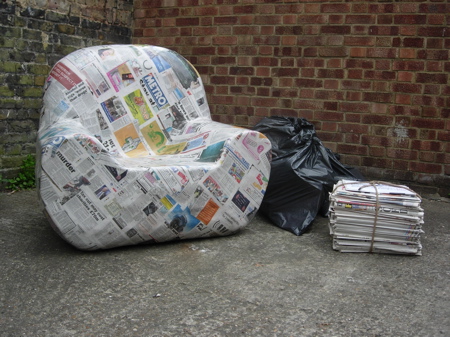
The chair is made of 120 layers of newspaper built up over an inflatable mould and was inspired by a Metro advertising Campaign which displayed images of innovative and creative ways in which to reuse waste newspaper.
With its inflatable mould the product can be reproduced - however each product is a one-off due to the nature of working with paper mache. Asif explains; “the product highlights mass consumption and also makes effective use of waste material."
Trash Luxe will be Asif’s first exhibition following his introduction at New Designers.
The Campana Brothers need no introduction. The Brazilian duo have become famous for their innovative use of everyday materials such as rope, hose pipes, timber offcuts and even cuddly toys which they transform into furniture that is decadent and opulent.
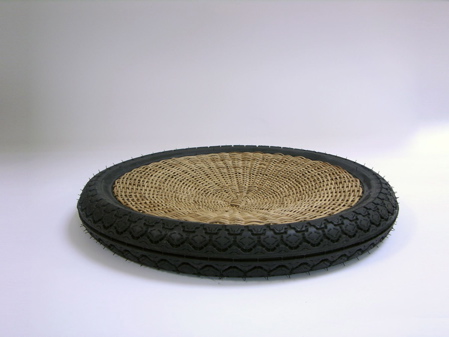
For Trash Luxe the Campana Brothers are showing objects from their collaboration with the Design with Conscience initiative set up by Artecnica, first shown at the Salone del Mobile in Milan this year. Their TransNeomatic bowls are produced in Vietman and combine traditional woven wicker techniques with used scooter tyres rescued from landfill sites.
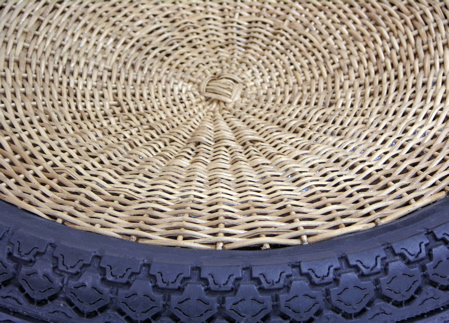
29 year-old Paul Cocksedge is a lighting designer who was shortlisted for the Design Museum’s Designer of the Year award in 2004.

Cocksedge is renowned for his ingenious use of materials, working in everything from glass and ceramic to polystyrene. Cocksedge studied industrial design at Sheffield Hallam University followed by product design under Ron Arad at the Royal College of Art in London. He has exhibited at the Design Museum and the Victoria & Albert Museum in London, while fashion designer Issey Miyake and lighting designer Ingo Maurer have both staged exhibitions of his work.
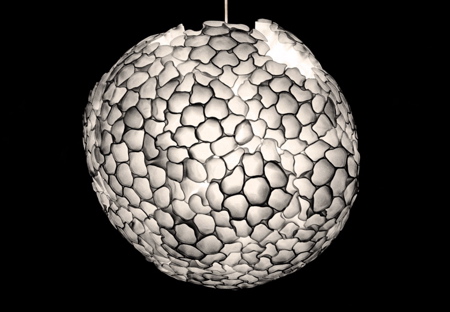
For Trash Luxe, Cocksedge will be exhibiting one of his now iconic Styrene lamp shades (above), which are made from polystyrene vending machine cups.
Catherine Hammerton graduated from the Royal College of Art, London, in 2005 with a Masters Degree in Mixed Media Textile Design. A London based Designer-Maker, her work is defined by its handmade aesthetic, involving techniques such as traditional silk screen printing, hand stitching and collaging of fabrics, papers, colours and textures.
Each piece is manufactured in the UK and is printed, stitched and embellished by hand. The trims and findings are all vintage, sourced at antique fairs spanning Europe - ensuring that no two pieces are ever the same.
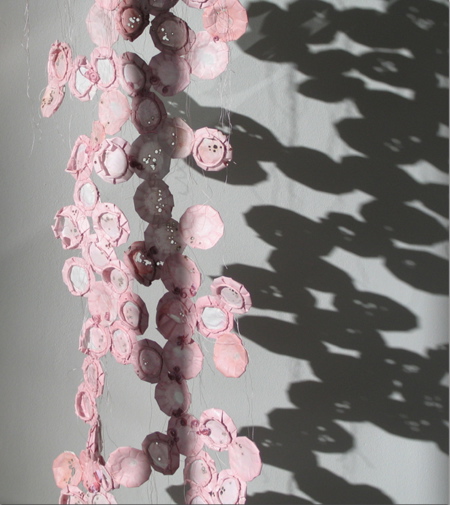
For Trash Luxe Hammerton will produce a Blossom wall hanging made from waxed-paper sauce pots (above) as well as limited-edition wallpaper featuring found objects.
Ineke Hans studied at the Royal College of Art and then worked for Habitat for three years before returning to her home-town, Arnhem, in Holland, where she set up her own studio. She has rapidly become one of Holland’s foremost designers, equally at home creating avant-garde furniture and award-winning industrial products.
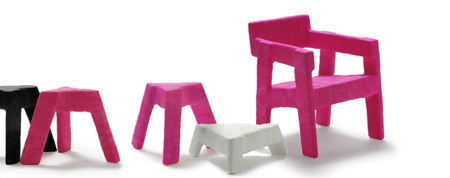
For Trash Luxe, Hans will present items from her latest range, Fracture Furniture (above), which takes the raw materials used to make plaster casts for broken limbs and reinvents it as a structural system.
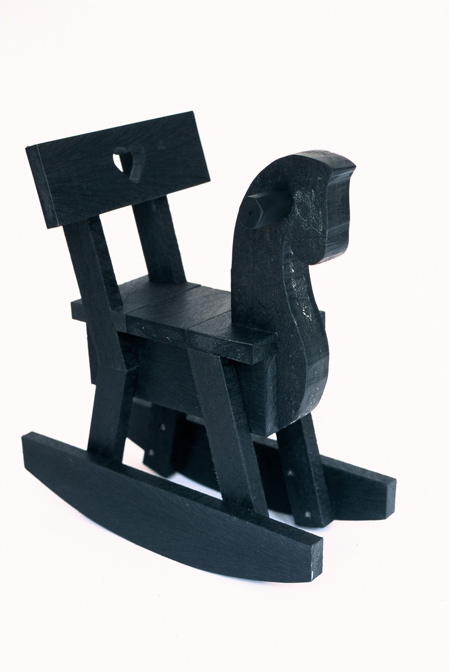
Working with recycled plastic, she will also be exhibiting items from her Black Beauties collection (consisting of children’s furniture and toys, above) and her Ordinairy Furniture (primitive dining and lounge furniture, below).
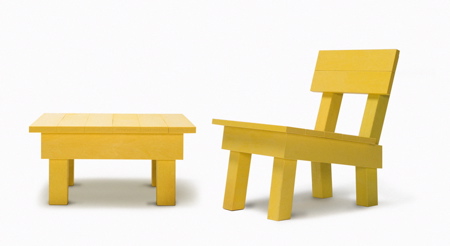
The work in Ineke Hans appears with the generous assistance of the Mondriaan Foundation.
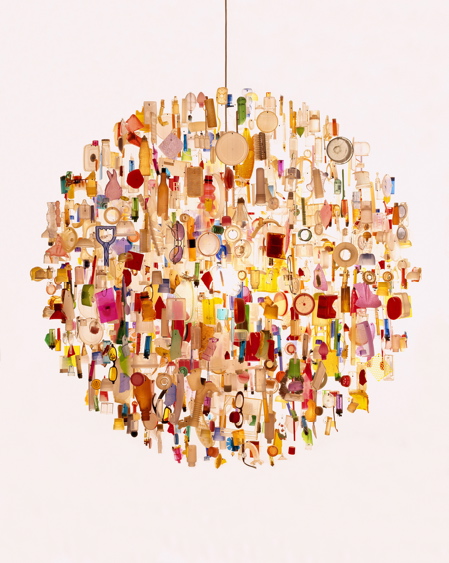
Stuart Haygarth drew attention at Designersblock two years ago when he showed Tide (above), a chandelier made from hundreds of plastic items found washed up on Dungeness Beach, and another made from party popper casings picked up after the Millennium celebrations in London.
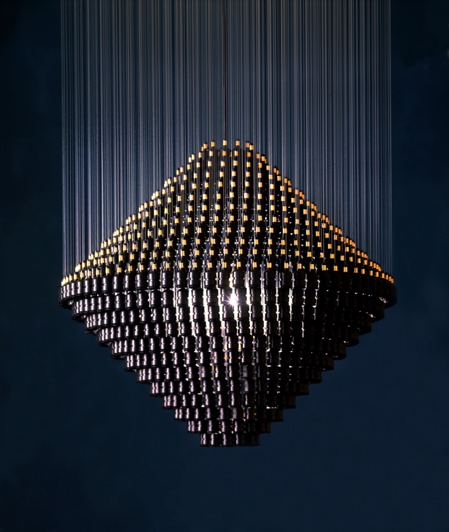
Originally trained as a graphic designer and photographer, he’s been generating interest in the world of product design for his technique of transforming rubbish into desirable objects. For Trash Luxe, Haygarth will be showing three new chandeliers made from found objects including unwanted sunglasses and a new version using party popper cartridges (Black Millennium chandelier, above).
Greetje van Helmond studied at the Design Academy Eindhoven followed by internships with Studio Edelkoort, Paris, and Addict Creative Lab, Brussels, before studying at the Royal College of Art where she graduated last year.
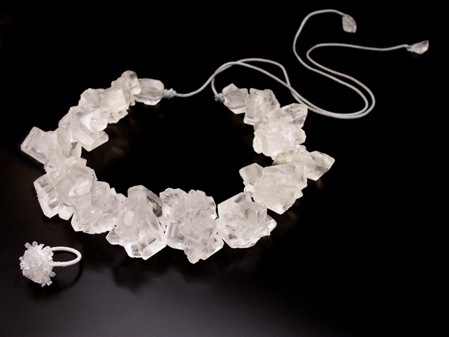
Describing her working process, she says, "In present day life, durable materials are often used for the production of goods that are typically replaced or thrown away quickly. In my work I like to reverse the line of thought by using everyday, basic materials to create products that appear valuable. I thereby seek a tension between the product’s appearance and the materials from which it is made." Her graduation show included a wall made from bread and a range of delicate jewellery items which on closer inspection turned out to be made from sugar crystals.
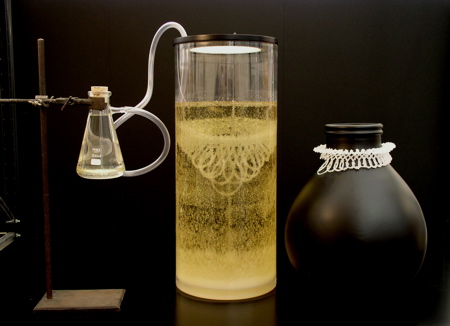
Trash Luxe will be showing a range of items from Unsustainable, van Helmond’s sugar jewellery (above).
Max Lamb may have only graduated from the Royal College of Art last year, but he’s already established himself as one of the most promising new designers to watch.
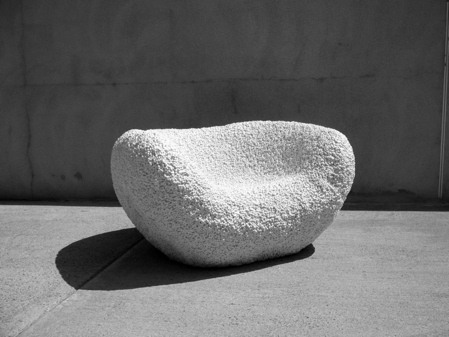
Influenced by his upbringing in rural Cornwall, his work involves working with simple, elemental materials and employing honest - and often crude - production methods: his Soft Poly Chair (above), for example, is made by carving a block of polystyrene with a claw hammer, while his Starch Chair is made of compressed potato-starch extrusions that are more usually used as packing material.
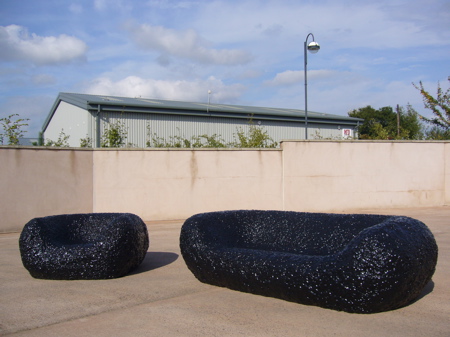
At Trash Luxe Lamb will be showing new versions of his Poly range of furniture (above), including a coffee table and a 3m long sofa.
Max Lamb appears courtesy of Carpenters Workshop Gallery.
Heath Nash
Heath Nash is a South African designer who studied sculpture at the University of Cape Town and since graduating in 1999 has become the country’s fastest rising design star. Nash explores the idea of national identity and the vernacular, taking as his starting point Cape Town’s ‘back-yard’ craft techniques, working with scavenged materials such as wire, electrical flex, bottle tops and plastic containers and transforming them into beautiful, functional objects.
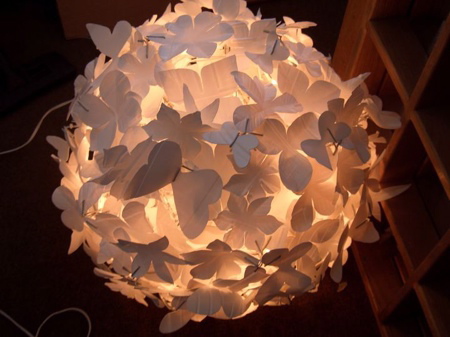
Trash Luxe will mark the first time that Nash’s work will be shown in the UK.
Heath Nash appears with the co-operation of the British Council. Special thanks to Design Indaba for their help in bringing Heath's work to London.
rAndom International was formed by Royal College of Art graduates Stuart Wood, Flo Ortkrass and Hannes Koch in 2002. Part of the new breed of ‘Technocraft’ designers, they fuse design, technology and art and their creations are often as much about performance as problem solving, such as their Pixel Roller - a digital paint roller that can transfer images created on a computer onto a wall.
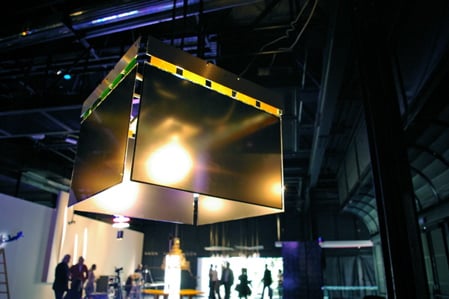
Trash Luxe will be showing a spectacular new chandelier-like version (above) of their Lost lights (above), first seen at the Salone del Mobile in Milan this year, which involve rewiring cannibalised TFT computer screens. The resulting interference patters that flicker across the screens become hypnotic, decorative patterns.

Karen Ryan studied graphic design, 3D design and fine art before studying Design Products at the Royal College of Art where she graduated in 2001. All these areas of study have influenced her work.
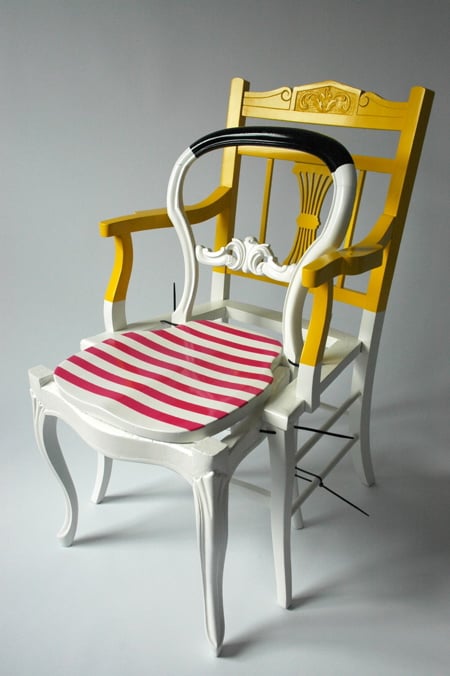
Her Custom Made range of furniture takes discarded chairs and re-combines them to create striking compositions that are simultaneously familiar and disorientating – a technique she describes as “seeing unconventional beauty in the everyday".
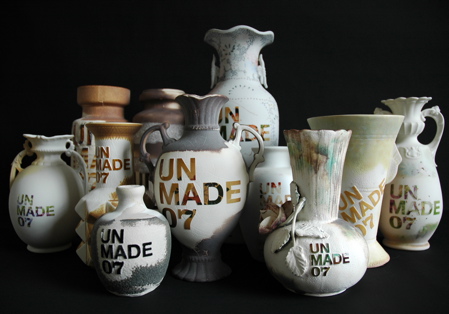
Similarly, her Unmade 07 range (above) takes unwanted ceramic vases and re-presents them as if they were custom made; Ryan grinds off the vases’ surface decoration leaving only her Unmade 07 logo standing proud from the raw ceramic surface.
New pieces in both ranges will appear in Trash Luxe, questioning notions of originality, provenance and value in designed objects, while investing unwanted everyday items with unique and strange qualities.
Karen Ryan appears courtesy of Rabih Hage.
Saudi Arabian born Nadia el Sebai graduated from Middlesex University in 2006 with a BA (Hons) Contemporary Jewellery. In the same year, she exhibited in Free Range, Graduate Fashion Week, New Designers and the Association of Contemporary Jewellery Performance.
For Nadia, “The beauty of jewellery is not in its form. It is in the promise of a wedding ring, the history of a family heirloom, the memory of a loved one in a locket, or even the preciousness of a plastic necklace treasured from a far away place."
"At the core of this range is flux. The fluidity of meaning and importance assigned to an array of items of random background. The key to meaningfulness is in the right location to fulfil a purpose – any item that has fallen out of context, loses its value and becomes trash; unless it is given a new lease of life in a new context."
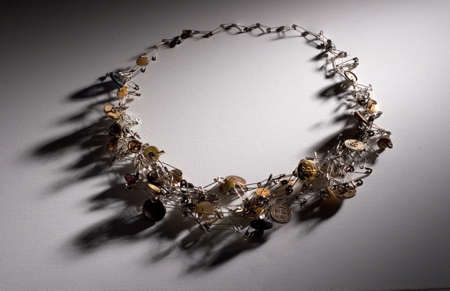
The jewellery selected for Trash Luxe plays with this idea. It secures the previously stranded bits and pieces and gives them a safe setting – the Safety Chain Necklaces (above) fixing buttons found in Brick Lane with safety pins – provide a particularly clear example of this. Another of her pieces is Brooches for Found Earrings (below), which celebrate the unexpected beauty of discarded costume jewellery.
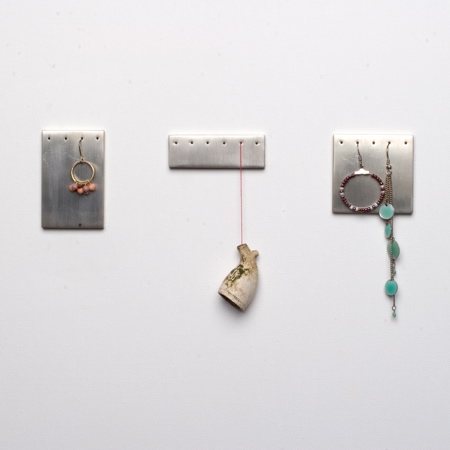
"Unlike a consumer product fresh off the assembly line, full of promise, these previous generations of buttons have a history and this is what sets them apart and gives them a value. The jewellery design ensures their preservation and indicates their value."